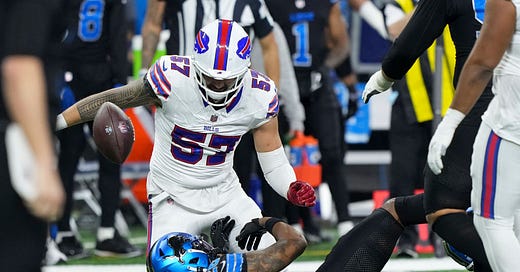More than yards per carry, NFL teams evaluate their run game based on its efficiency. As a reminder, an efficient run is a gain of at least 4 yards on first down, half the remaining distance on second down, and a conversion on both third and fourth down.
Ideally, you’d like to be around 50% or better.
Ahead of Sunday’s game against the Buffalo Bills, the Lions looked primed for success. They had been one of the league’s most efficient running operations in 2024, while the Bills defense had been below-average stopping the run. Add in the fact that it was a point of emphasis for the Lions after coach Dan Campbell had criticized the operation’s inefficiency from the previous week’s victory over Green Bay and it was reasonable to believe the Lions would get things back on track.
But that was hardly the case. The Bills smothered Detroit’s running backs in the contest, limiting David Montgomery and Jahmyr Gibbs to 35 yards combined. The scoreboard dictated the Lions abandon the run in the second half, but in terms of efficiency, the Lions mustered a success rate of 30.8% on the tandem's carries.
That marks the fourth time in the past seven games the Lions have had an efficiency under 35%. It’s a concerning trend. Asked about the ground game woes on Monday, Campbell said the issues have been varied.
"It’s frustrating because it’s, man, it’s one guy here, and it’s one guy there,” Campbell said. “It’s not just, ‘Well, it’s the scheme, it’s the same player who’s continuing to…‘ Man, it could be the receiver one play, it’s the backside tackle one play, it’s the tight end on one play, and so it’s just we’re taking turns a little bit on some things right now.”
As the Lions move forward and plan for Chicago, let’s look at all 13 runs from last Sunday’s game and explore the breakdowns.





